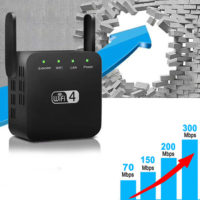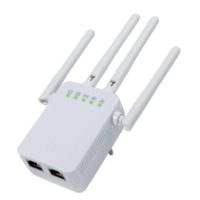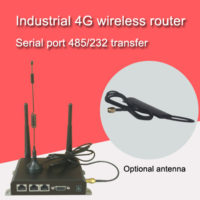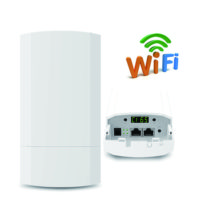To anyone stuck at home with a slow, spotty internet connection, WiFi range extenders sound very appealing.
You buy one for as little as $30, plug it into an outlet, and your problem is solved.
Or so the marketing goes.
The truth, however, is more nuanced.
As recent testing by Consumer Reports shows, WiFi range extenders can be useful in certain scenarios, but you shouldn’t think of them as a slam-dunk fix for your WiFi woes. In many cases, what you really need is a mesh router system that uses multiple units, working in concert, to blanket your home in strong WiFi signals.
The problem is that a good mesh router setup can cost $200 to $500.
With that in mind, we set out to see just how effective a low-cost WiFi extender can be in improving WiFi coverage. We tested six popular models from companies. The options range in price from $30 to $140.
What did we learn?
WiFi extenders can, in fact, expand the range of your wireless network. But their effectiveness is limited by a host of factors, including the speed of the internet connection coming into your home, the distance from your router, the areas in your home in need of WiFi coverage, and the WiFi demands of your family.
How Does a WiFi Extender Work?
While it’s tempting to think of a WiFi range extender as a device that can beam fast, reliable WiFi throughout your home, it’s more like a spot fix for the dead zone in your bedroom or attic-turned-home office.
To get the best results, you have to plug the extender into a power outlet midway between your router and the dead-zone area. The extender can then pick up the WiFi signal from your router and push it deeper into your home.
But you’re likely to notice a significant drop in throughput speeds in the “extended” network.
That’s in part because an extender relies on the same frequency band as the router itself. So now the data that originally would have come directly from the access point to your connected device is going through an intermediate step.
That extra step can reduce the speed of your WiFi signal by about half. So, for example, if you’re standing right next to your WiFi router (where the signal is strongest) and get 50 megabits per second (fast enough to stream two 4K Netflix videos at once), the speed in your extended network will be about 25 megabits per second. And that’s in an ideal world, where the WiFi signal from the router hasn’t been degraded by obstacles such as thick walls and large appliances.
By contrast, mesh routers use two different frequency bands, which limits the speed loss to roughly 10 percent. They often come in packs of three, too, which allows you to move the units around your home, creating widespread coverage.
Should You Try Using a WiFi Extender?
To answer that question, we put a half dozen models to work in two modest-sized homes owned by Consumer Reports testers. One house measures about 2,000 square feet and the other nearly 2,200 square feet.
The smaller house has an outdoor deck area with spotty WiFi. The larger place needed help getting a WiFi signal to the home office above the garage.
The first thing we learned is that the mobile apps designed to guide you through the setup process aren’t as easy to use as the manufacturers would have you believe.
All of the models supported this app-based setup, but our testers were often tripped up by the unclear directions. In some cases, the apps even failed to set up the extender.
All six models also support Wi-Fi Protected Setup (WPS), which allows you to link the device to your router with the push of a button. If your router supports WPS, too, we recommend going that route. It’s much easier.
You simply push the WPS button on the router and minutes later on the extender, and the device gets linked to the WiFi network without making you type in a username and password.
Once the connection is complete, you can use the extender app to adjust the device settings to suit your needs.
To position the extenders properly, we followed the directions included with each model. They generally recommend plugging the unit into an outlet about halfway between the router and the area you hope to reach with the extended signal.
If you place the extender much farther from the router, you risk losing more signal speed than necessary. If you place it too close to the router, you may not be able to push the signal to the desired location.
Using the website Speedtest.net, we measured the signal strength—or throughput—of the routers at various distances, first using the 2.4GHz 802.11n (WiFi 4 standard) frequency band and then the 5GHz 802.11ac (WiFi 5) frequency band. (None of the extenders or routers used in the testing support the new WiFi 6 standard.)
We repeated the measurements a minimum of four times, taking an average of the four runs to get the tested throughput for each extender. See the results on the product cards below.
In the end, the extenders succeeded in expanding the reach of the WiFi signal in the two test environments.
Just keep in mind that it’s not necessarily the kind of signal you need to watch Netflix.
If your goal is to get WiFi in that one dead zone in your home so you can browse the web and check email, a WiFi range extender can be useful. But if you’re looking to increase coverage throughout your home, a mesh router is the better option, especially if you need a high-speed signal for tasks like gaming or HD video streaming.





Leave A Comment